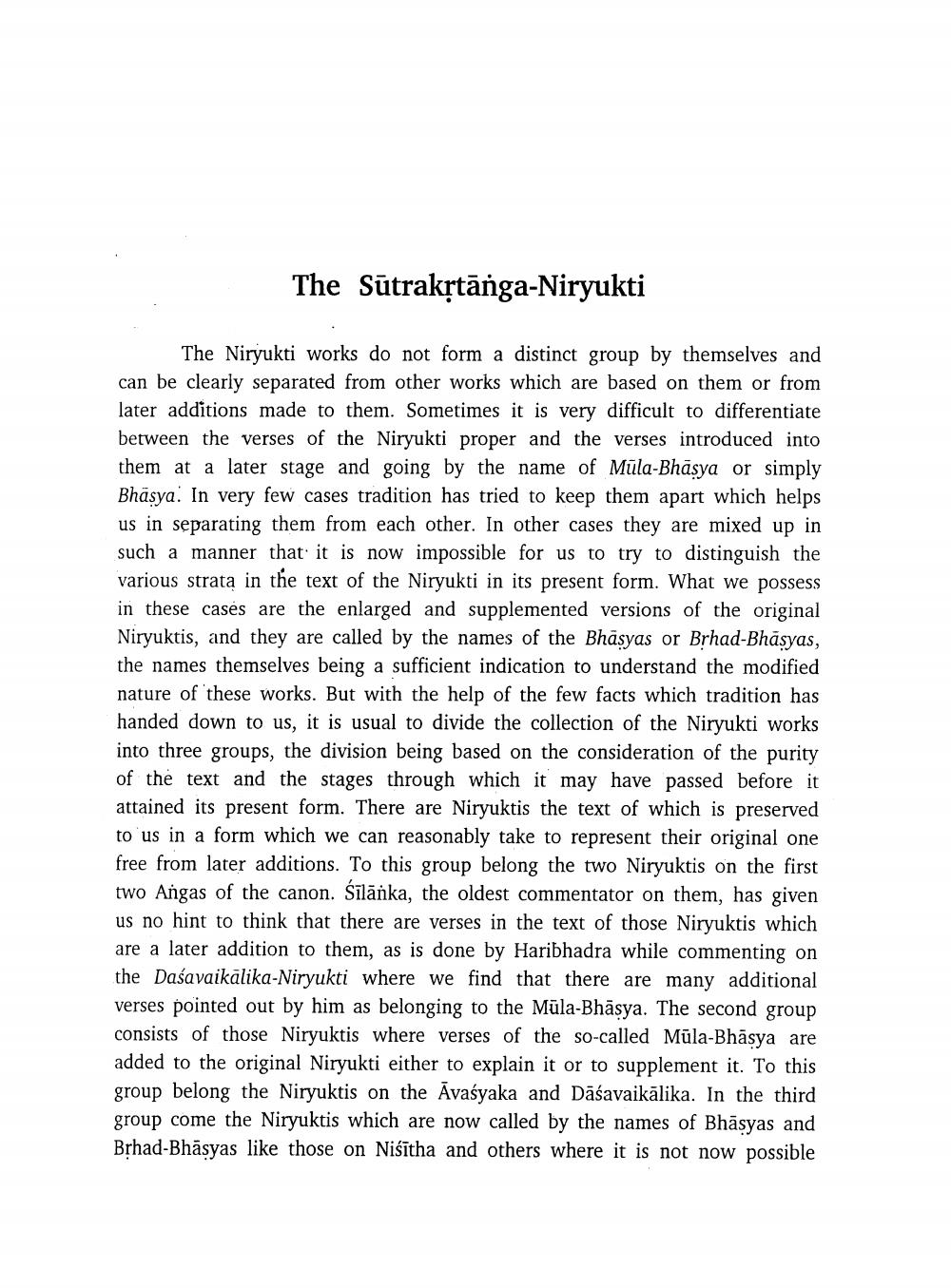________________
The Sūtrakrtānga-Niryukti
The Niryukti works do not form a distinct group by themselves and can be clearly separated from other works which are based on them or from later additions made to them. Sometimes it is very difficult to differentiate between the verses of the Niryukti proper and the verses introduced into them at a later stage and going by the name of Mula-Bhasya or simply Bhāsya. In very few cases tradition has tried to keep them apart which helps us in separating them from each other. In other cases they are mixed up in such a manner that it is now impossible for us to try to distinguish the various strata in the text of the Niryukti in its present form. What we possess in these cases are the enlarged and supplemented versions of the original Niryuktis, and they are called by the names of the Bhāsyas or Brhad-Bhāsyas, the names themselves being a sufficient indication to understand the modified nature of these works. But with the help of the few facts which tradition has handed down to us, it is usual to divide the collection of the Niryukti works into three groups, the division being based on the consideration of the purity of the text and the stages through which it may have passed before it attained its present form. There are Niryuktis the text of which is preserved to us in a form which we can reasonably take to represent their original one free from later additions. To this group belong the two Niryuktis on the first two Angas of the canon. Sīlānka, the oldest commentator on them, has given us no hint to think that there are verses in the text of those Niryuktis which are a later addition to them, as is done by Haribhadra while commenting on the Daśavaikālika-Niryukti where we find that there are many additional verses pointed out by him as belonging to the Müla-Bhāsya. The second group consists of those Niryuktis where verses of the so-called Mula-Bhāsya are added to the original Niryukti either to explain it or to supplement it. To this group belong the Niryuktis on the Āvaśyaka and Dāśavaikālika. In the third group come the Niryuktis which are now called by the names of Bhäsyas and Brhad-Bhäsyas like those on Niśītha and others where it is not now possible




